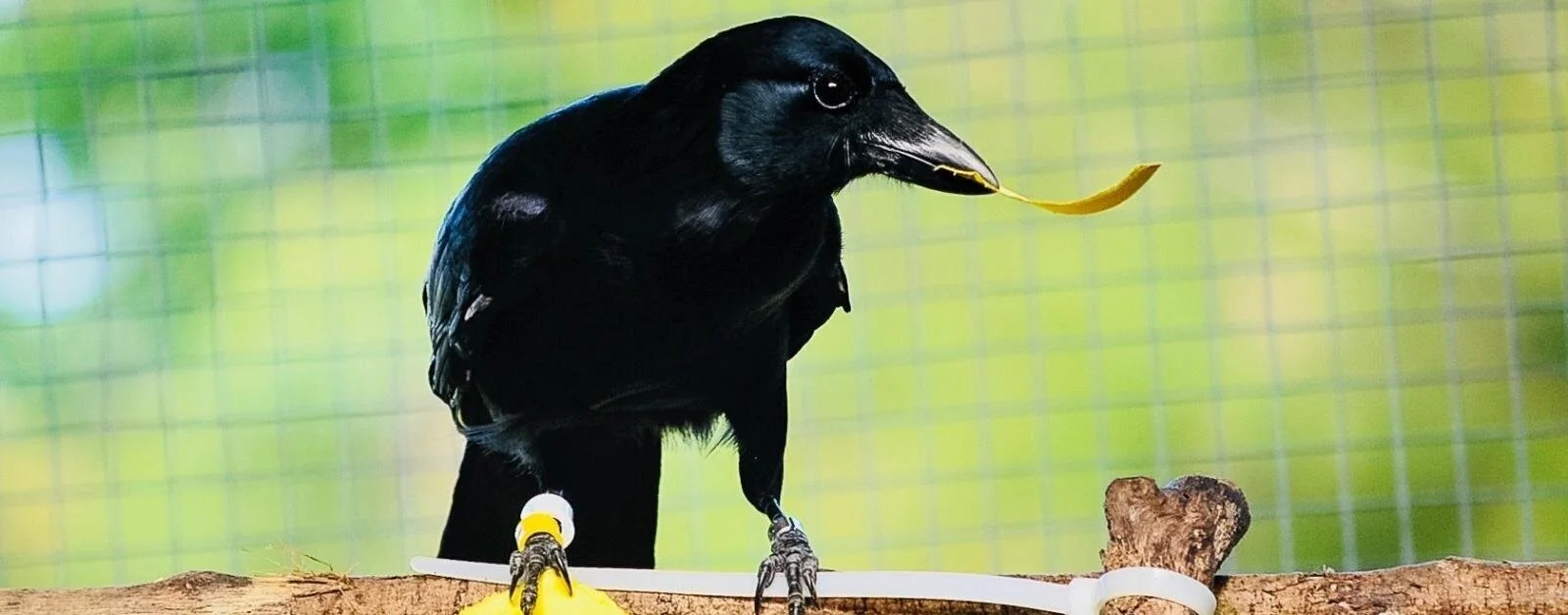Not So Bird Brained After All
An EcoChi Vital Abstract
This article was posted on June 28, 2018 by Tim Collins, Mail Online.
Crows have long been known for their advanced reasoning skills. A new study found that they can make their own tools from memory and will even improve on their own designs over time. Experts from the universities of Cambridge and Auckland trained eight New Caledonian crows to drop differently sized pieces of paper into a vending machine to receive rewards. Only pieces of a particular size were rewarded. Once the crows had been trained to recognize which sizes were rewarded, the team provided them with a large piece of card but no physical templates of the previously rewarded paper sizes. They found that the crows tore up the card to form items that were similar in size to the pieces of paper that they had previously received a reward for. Experts say this shows they had formed a mental image of their tool designs. Similar abilities enabled our ancestors to improve on their tool designs over time. The skill of creating a mental image of an object and then recreating it is something usually only seen in humans. Writing in a paper on the findings, its authors said: 'Cumulative cultural evolution occurs when social traditions accumulate improvements over time. In humans, cumulative cultural evolution is thought to depend on a unique suite of cognitive abilities, including teaching, language and imitation. Tool-making New Caledonian crows show some hallmarks of cumulative culture; but this claim is contentious, in part because these birds do not appear to imitate. One alternative hypothesis is that crows’ tool designs could be culturally transmitted through a process of mental template matching. That is, individuals could use or observe other crows’ tools, form a mental template of a particular tool design, and then reproduce this in their own manufacture – a process analogous to birdsong learning.' New Caledonian crows are known to make basic stick tools, hooked stick tools and barbed tools torn from the leaves of plants. Although New Caledonian crows do not appear to closely observe or imitate the process of tool manufacture in the wild, specific tool designs made by crows living in different areas have persisted for at least several decades and improved over time. This suggests that the skill of tool making somehow spreads throughout crow populations, the researchers claim. Another study by scientists from the University of Auckland shows crows have a reasoning ability rivalling that of a human child. The study subjected six wild New Caledonian crows to a battery of tests designed to challenge their understanding of cause and effect. In the 'water displacement task', crows worked out how to catch floating food rewards by dropping heavy objects into water-filled tubes. They demonstrated an ability to drop sinking rather than floating objects, solid rather than hollow objects, to choose a high water level tube over one with low water level, and a water-filled tube over one filled with sand. Experts claim the birds' understanding of the effects of volume displacement matched that of human children aged between five and seven.
Copyright © 2019 EcoChi, LLC. All rights reserved.




